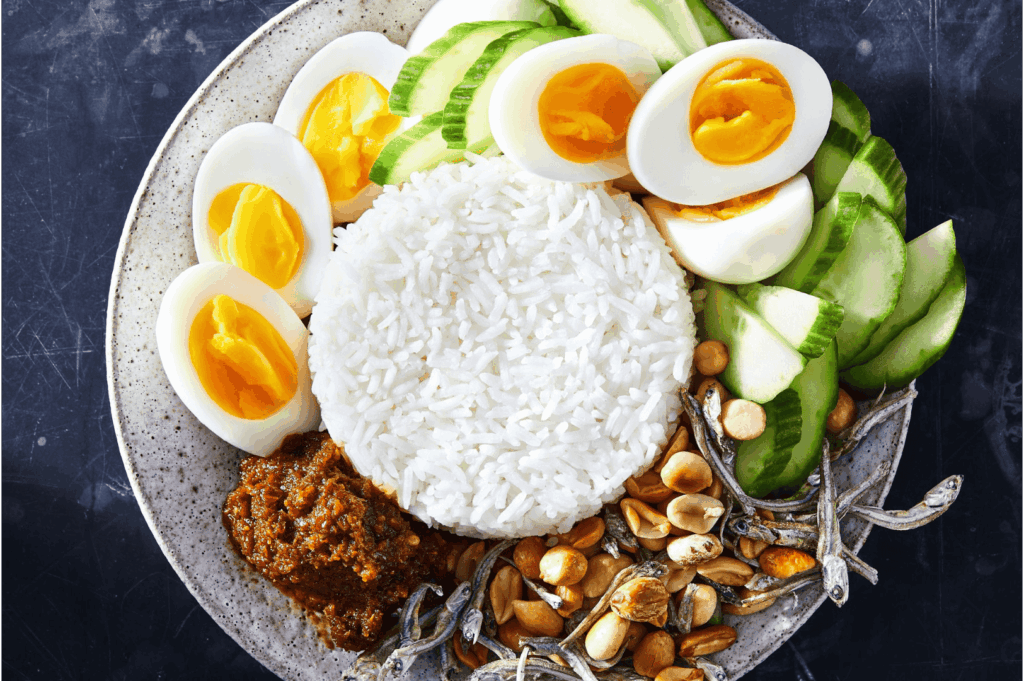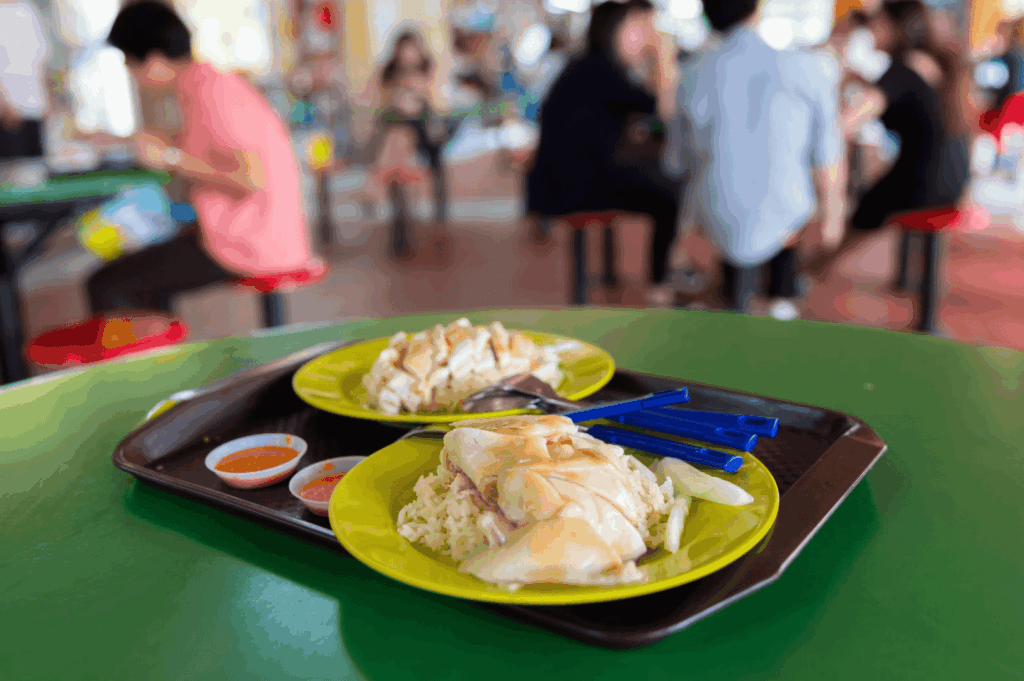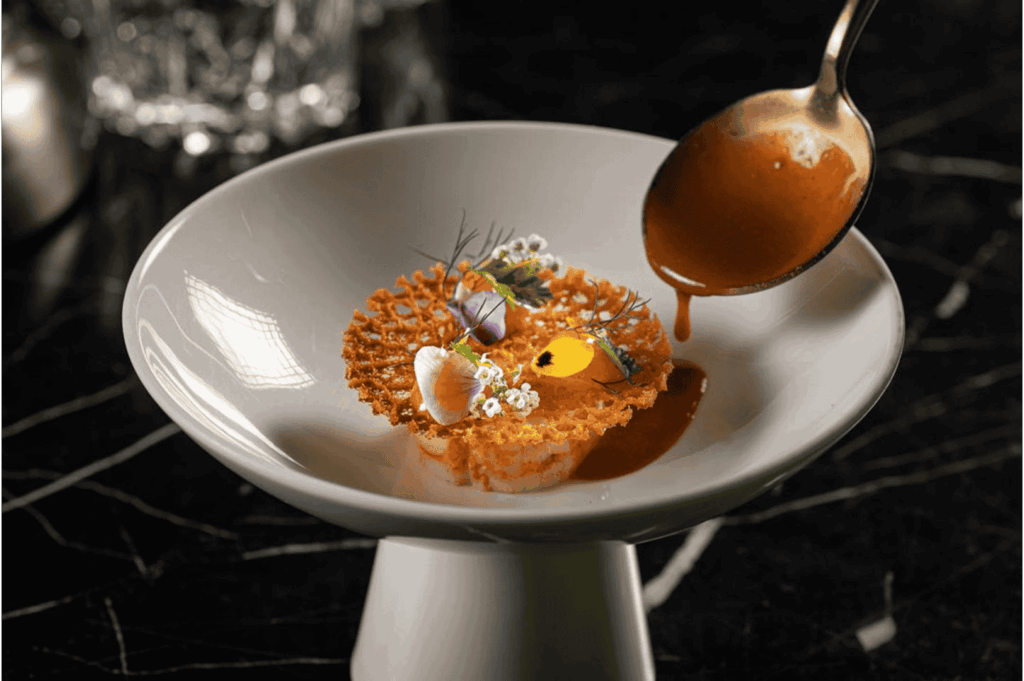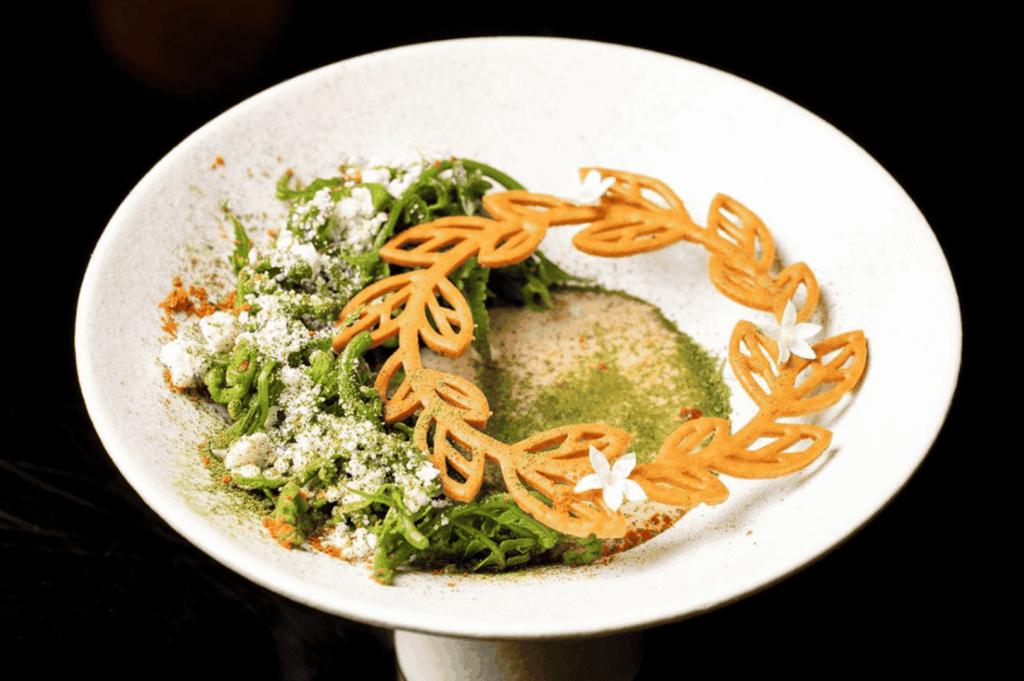
In Singapore’s vibrant tapestry of flavors, Malay cuisine claims a place of profound significance. This diverse food tradition is defined by aromatic spices, rich coconut milk, and complex sambals, creating a unique melting pot that truly reflects Singapore’s multicultural foodscape. More than just food, Malay cuisine anchors community, celebration, and cultural heritage in every bite, whether you’re enjoying a rice dish wrapped in banana leaf for breakfast or sharing platters of fried chicken and spicy noodle soup. As Singapore has transformed, so has Malay food. This article delves into the fascinating Malay cuisine evolution, tracking its journey from authentic village recipes and staple street food to the inventive, globally-inspired plates of modern Malay cuisine, while shining the spotlight on pioneering chefs and restaurants that keep both tradition and innovation alive.
Coconut Milk and Historical Roots: The Foundation of Traditional Malay Food

The soul of traditional Malay food is steeped in time-honored culinary traditions and the powerful flavors of coconut milk, pandan leaves, and shrimp paste. Dishes are brought to life with rempah, a complex spice blend of chilies, shallots, garlic, galangal, lemongrass, and turmeric. Maritime trade across the Malay Archipelago, especially with Malaysia and regions like Kuala Lumpur, introduced essential spices and cooking techniques that continue to shape Singapore’s Malay cuisine and Malaysian cuisine today.
Core techniques include tumis (sautéing rempah), rebus (boiling/stewing in curry sauces and sweet gravy), and bakar (grilling over charcoal), often featuring seafood dish favorites or grilled fish marinated in tamarind juice and chili paste. Coconut milk is used in abundance—its richness found in rice cooked for nasi lemak, curries, and coconut milk cooked desserts. The cuisine values patience: meats are slow-cooked with spicy sambal or stewed in thick gravies until they’re meltingly tender.
“Traditional Malay cooking is about generosity—a slow layering of flavors and aromas that turns every meal into a celebration,” shares Chef Sufian, specialist in Malaysian cuisine and Malay dishes.
Pillars of the Past: Iconic Traditional Malay Dishes

No malaysian food journey is complete without savoring Singapore’s most iconic traditional Malay and Malaysian dishes. Many are considered Malaysia’s national dish and are commonly eaten across the region, from roadside stalls in Kuala Lumpur to Singapore’s hawker centres.
Nasi Lemak: The National Dish
Often considered the pride of Malaysian cuisine, nasi lemak is a fragrant rice dish—rice cooked with coconut milk and pandan leaves, topped with a spicy sambal, fried anchovies, roasted peanuts, hard boiled eggs or half boiled egg, fried chicken or fish, and cucumber. Traditionally served on a banana leaf, it’s a culinary symphony of spicy taste, creamy coconut, crunchy peanuts, and sweet sauce.
Rendang: A Culinary Classic
Not quite a curry, rendang is a legendary slow-cooked dish of beef braised in coconut milk, rempah, and palm sugar syrup until the liquid evaporates, leaving the meat coated in an intensely flavorful, thick gravy. Modern versions sometimes feature lamb, chicken, or even plant-based protein.
Satay and More: Street Favorites
Malay satay is a beloved street food—skewers of marinated chicken, beef, or mutton, grilled over charcoal or open flame, typically served with sweet peanut sauce, spicy sambal, fried tofu, pickled vegetables, sliced cucumber, and ketupat (compressed rice cakes wrapped in banana leaf). Crispy fried onions and roti canai often round out the street feast.
Curry Laksa, Mee Rebus, and Noodle Dishes
Breakfast food in both Singapore and Malaysia often features a hot spicy noodle soup—curry laksa, thick rice noodles in coconut curry broth with fried tofu, bean sprouts, fish cakes, boiled egg, and seafood like shrimp or fish head. Mee rebus is a sweet, slightly spicy noodle dish, with egg noodles in a sauce made from sweet potato, shrimp paste, and light soy sauce, garnished with fried onions and lime juice.
Malaysian Cuisine in Hawker Centres: Preserving Malay Food Heritage

As Singapore urbanized, the hawker centre became the home of traditional Malay food and Malaysian food. Once found in kampungs, classic Malay dishes like nasi lemak, mee rebus, fried rice, and stir fried delights took on new life alongside other regional and foreign fare. Today, a Malaysian dish such as nasi goreng, a spicy stir fried rice with chili paste, sweet sauce, and sometimes seafood or Chinese sausage, is a staple food in the daily life of many Singaporeans.
Many stalls still serve their rice noodle or thick rice noodles in the old school way—on banana leaf, with a generous amount of sambal, fish sauce, and fried anchovies. Even sweet treats like shaved ice desserts (ice kacang) with palm sugar syrup, sago, or coconut milk remain crowd favorites.
Drivers of Change: Modernizing Malay Cuisine
The evolution of Malay cuisine and the wider culinary traditions of Singapore reflect changing times:
- Global Influences: Younger chefs and restaurateurs bring international techniques to bear, fusing Malay ingredients and flavors—think nasi lemak sushi rolls or rendang burgers.
- Changing Lifestyles: The rise of health-conscious diners drives adapted versions of traditional fare, like steamed rice instead of fried rice, and curries with reduced coconut milk and more vegetables.
- Social Media & Trends: Photogenic modern Malaysian cuisine and Malay food—like dazzling cone-shaped banana leaf rice towers and fruit salad with grated coconut—garner wide followings on Instagram.
- Ingredient Innovations: More diverse ingredients from around the world allow modern Malay chefs to experiment; truffle oil in nasi lemak or wagyu in rendang are no longer uncommon.
- Plant-Based Options: With demand for vegetarian and vegan options rising, jackfruit, tofu, or even mushrooms substitute for meat in curry laksa and rendang.
Modern Malay Cuisine: Creativity and Innovation

Contemporary Plating
No longer just about heaping comfort food in banana leaves, modern Malaysian cuisine and modern Malay cuisine now feature contemporary plating. Dishes may be “deconstructed” with rice balls, sambal aioli, and deep fried anchovy crisps arranged for visual drama.
Fusion Concepts
Malay flavors blend seamlessly into fusion creations: expect chicken curry lasagna, curry mee pasta, or roti canai burritos. Chefs blend Malaysian and international culinary traditions, offering new flavors for today’s adventurous palates.
Plant-Based Adaptations
Vegan, vegetarian, and flexitarian diners now enjoy Malay cuisine more than ever—think nasi lemak with tempeh and fried tofu, or curry sauces with soy-based protein, all still rich with coconut milk and aromatic spices.
| Dish | Traditional Approach | Modern Interpretation |
|---|---|---|
| Nasi Lemak | Served on banana leaf; classic toppings include fried anchovies, peanuts, | Deconstructed plating; sambal aioli, rice balls, deep fried anchovy crisps, and half boiled egg |
| hard boiled eggs, fried chicken or fish, and spicy sambal. | or sous-vide egg; truffle oil or unique dipping sauces sometimes added. | |
| Rendang | Slow-cooked beef, coconut milk, and rempah for hours. | Wagyu or plant-based protein; sous-vide for extra tenderness; sometimes topped with fresh fruits. |
| Satay | Chicken, beef, or lamb skewers grilled and served with peanut sauce. | Satay nachos, satay tacos, “satay lilit” with minced meat, peanut sauce foam, and exotic salads. |
| Curry Laksa | Thick rice noodles, coconut broth, fried tofu, seafood, boiled egg. | Coconut milk cooked with modern curry paste infusions, tofu puffs, or plant-based alternatives. |
Malay Cuisine—Case Studies: Innovators Shaping Modern Malay Food in Singapore
Hjh Maimunah Restaurant
This stalwart of traditional Malay food keeps the classics alive: nasi padang, seductively spiced beef rendang, and hearty rice dish feasts are still freshly prepared daily. Their use of quality coconut milk and authentic rempah recipes has earned them a Michelin Bib Gourmand and a loyal following.
Rempapa (The Cicheti Group)
Chef Damian D’Silva’s restaurant is a temple of heritage, reviving classic Malay and Malaysian dishes with refined skill. Expect modern takes on fish head curry and grilled chicken or shrimp curry, alongside meticulous renditions of time-honored favorites.
Popo’s Kitchen
Founded by the next generation, Popo’s Kitchen reinvents malay food in a contemporary eating house setting, offering deep fried chicken in palm sugar glaze, nasi lemak with yam paste, and “modern kampung” salads with pickled vegetables and grated coconut.
“We’re not just keeping recipes alive—we’re allowing Malay food and Malaysian cuisine to evolve, ensuring a spot for every generation at the table,” says Popo’s Kitchen’s chef-owner.
Looking Forward: The Future of Malay Dishes, Malaysian Cuisine & Innovation

The future of Malay cuisine in Singapore is dynamic and promising. As older hawkers and culinary veterans pass their knowledge on, younger chefs will continue innovating—bringing new approaches to national dish classics, from fish head curry to spicy curry laksa and grilled fish with sweet sauce. Malaysia’s food scene—from Kuala Lumpur to Singapore—remains an endlessly creative melting pot, offering the perfect balance of tradition and contemporary flair.
Whether breakfast dish, spicy soup, or banana leaf-staple food, Malay and Malaysian food boast deep roots while offering endless new experiences for every palate. Explore a traditional Malay dish at a humble hawker, then try a modern reinterpretation at a chic contemporary Malay restaurant to savor the full spectrum of this much-loved cuisine.
Continue your culinary journey with Singapore’s best group dining restaurants or dive into the vibrant world of Vietnamese street food in Singapore.
10 Must-Try Restaurants for Malay and Malaysian Cuisine in Singapore
Traditional:
- Hjh Maimunah Restaurant: Nasi Padang ($) – Signature: Beef Rendang, Siput Sedut, nasi lemak with fried chicken.
- Warong Nasi Pariaman: Nasi Padang ($) – Signature: Ayam Bakar (grilled chicken), bean sprouts with dark soy sauce.
- Rumah Makan Minang: Nasi Padang ($) – Signature: Tahu Telur, stir fried seafood dish.
- Selera Rasa Nasi Lemak (Adam Road): Nasi Lemak ($) – Signature: Royal Rumble set (fried anchovies, sambal, grilled fish, fried onions).
- Sabar Menanti II: Nasi Padang ($) – Signature: Oxtail Soup, tamarind juice chicken curry.
Modern:
- Rempapa: Heritage Cuisine ($) – Signature: Baca Assam (tamarind-rich seafood), innovative curry laksa, and deconstructed roti canai.
- The Malayan Council: Fusion ($) – Signature: Roti Kirai Beef Ribs, Ondeh-Ondeh Cake, and plant-based curry mee.
- Pangium: Fine Dining ($$) – Signature: Fish head curry, sweet and spicy noodle dishes with banana leaf plating.
- Badoque Cafe: Hearty Halal Fusion ($) – Signature: Spicy wings, nasi goreng with lime juice and fresh chutneys.
- Permata Singapore: Progressive Nusantara Cuisine ($$) – Signature: Elevated traditional dishes, plant-based rendang, unique sweet soups and desserts.
($: under S$15, $: S$15-S$40, $$: S$40-S$80, $$$: above S$80 per person)


